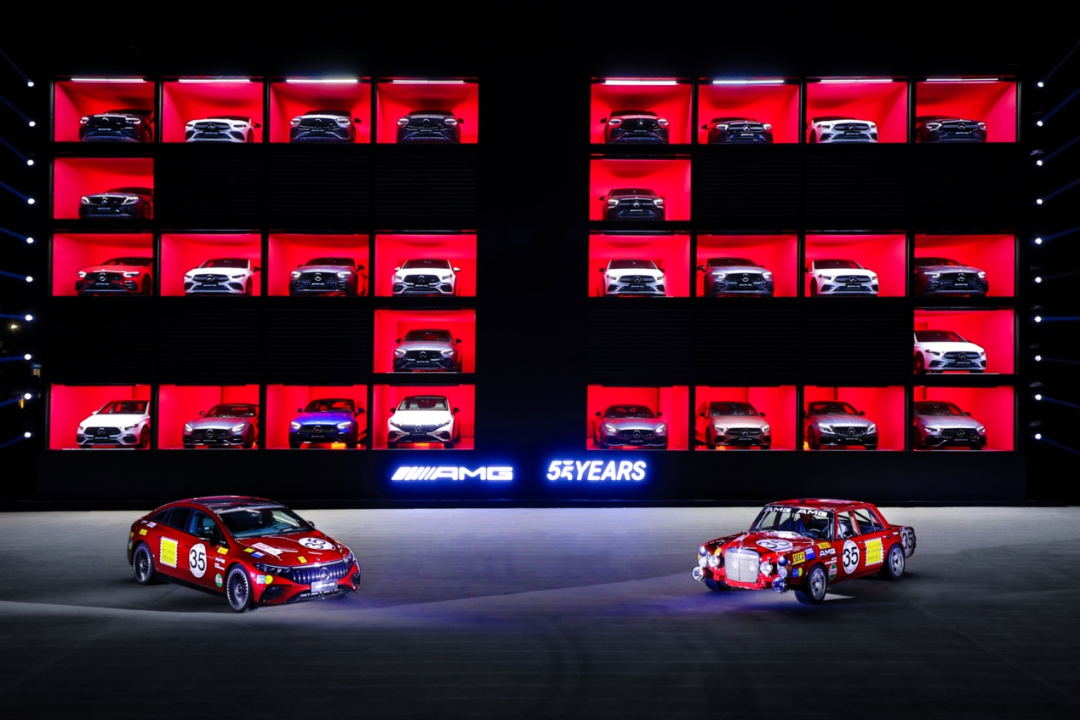Joey
When I was at the Zhejiang International Circuit, and the AMG EQS 53 4MATIC+ accelerated, it felt like my body and soul underwent a deep separation.
The surrounding scenery receded rapidly, and my eyes could perceive everything, but I couldn’t intervene with my body to operate quickly. I don’t know how long it took for my soul to catch up with this racing car, but what I do know is that I completed the official 0-100 km/h acceleration time of 3.5 seconds in 3.8 seconds+.
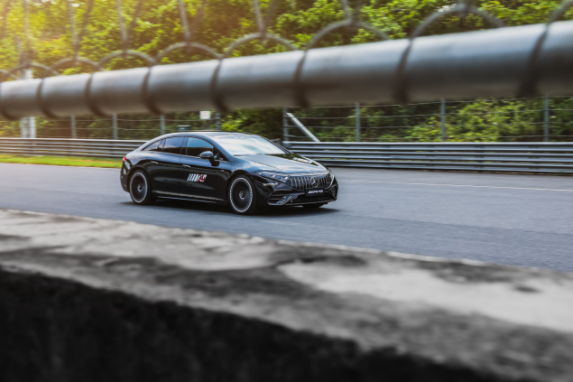
This is not an exaggeration of performance indicators (after all, some people have achieved even lower data than the official one), it’s just that after experiencing the acceleration of the Porsche 911 Targa not long ago, I deliberately held back when facing the electric Mercedes-AMG (of course, it could also be the overload weight of my own body exceeding 100 kg that slowed me down). After all, I anticipated that I might not be able to handle it when the electric motor with much higher transmission efficiency than a mechanical gearbox is in full-power mode.
Without a doubt, this is an understanding of the superior performance of electric cars over fuel-powered vehicles, and a recognition of AMG’s electrification. After all, even someone who doesn’t know much about it can guess that when electric power and AMG are put together, it will inevitably bring either surprise or shock through the tremendous power produced.
But regardless of what it brings, “powerful” is the only keyword that can accurately describe it.
Of course, many people may also question whether electric cars, regardless of whether they follow the range route, the intelligent route, or the family route, must have performance as a crucial piece of their product characteristics. Hence, as AMG, representing automotive performance in the era of internal combustion engines, how to thrive in this era will determine its future direction.
Large size first, but it’s actually traditional
Mercedes-Benz came out with an AMG electric car, the EQS 53 4MATIC+ with a body length of over five meters and the “S” badge on it. It surprised me a little bit.
According to the understanding of performance by the vast majority of people, horsepower can solve almost all problems, while size concerns handling performance. Obviously, in the era of electric cars, horsepower has no longer been a worry. Here, horsepower refers not to the data read on a dynamometer, but the actual horsepower reflected on the wheels after significantly reducing mechanical transmission losses. (The AMG EQS 53 has four driving modes: Comfort, Sport, Sport+, and “Launch Mode,” with maximum power of 400 kW, 440 kW, 484 kW, and 560 kW, respectively.)
However, there are still some concerns regarding the 2.7-ton body weight. How well can it resist the force of frontal impact? Similarly, is a larger body size flexible enough to give you real control before inertia takes over?
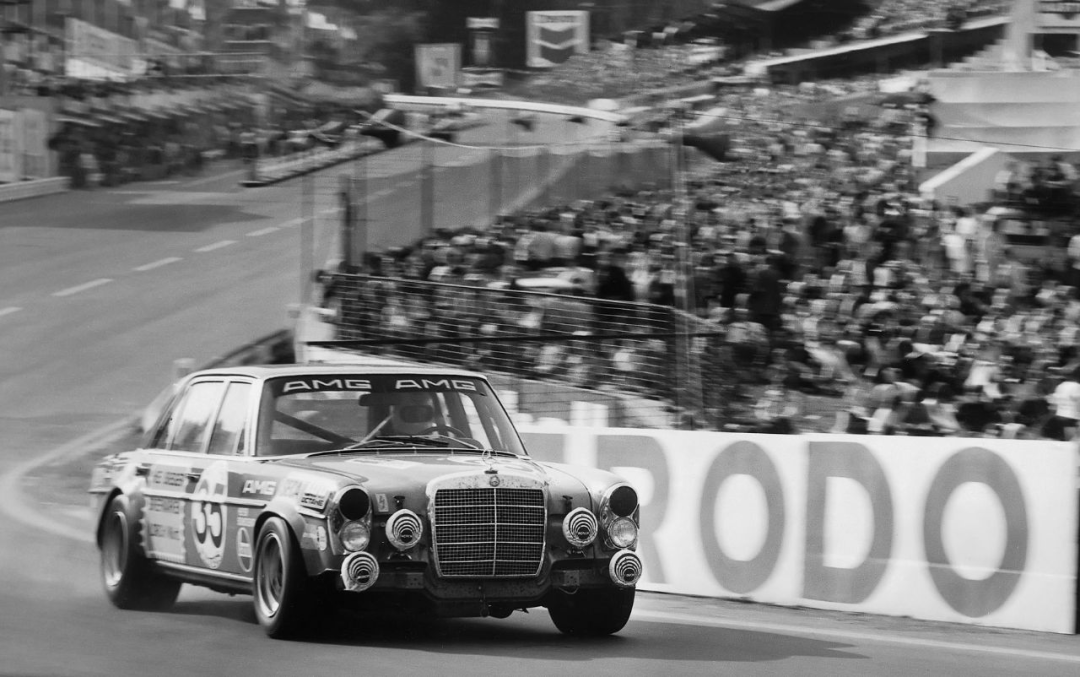
Yet, if you know the history of AMG, these concerns seem to be insignificant. After all, in 1971, the legendary “Red Pig” – the 300 SEL 6.8 AMG shocked the world and became a classic of its generation, with a full-sized body that gave the AMG brand its first gold leaf in 55 years of shining.
However, powerful performance is not the only strength of the “Red Pig”. Other important factors that contributed to its excellent performance were the unique insights of AMG’s two founders into driving and especially aggressive driving. In the “Red Pig,” which still features wood trim and leather seats, more robust shock absorbers, more precise steering, and a more compact and solid overall chassis enhance the aggressive driving experience.
Today, with AMG’s continuous immersion in the performance field and the continuous addition of technology, the AMG EQS 53 4MATIC+ has even more powerful performance and better handling.
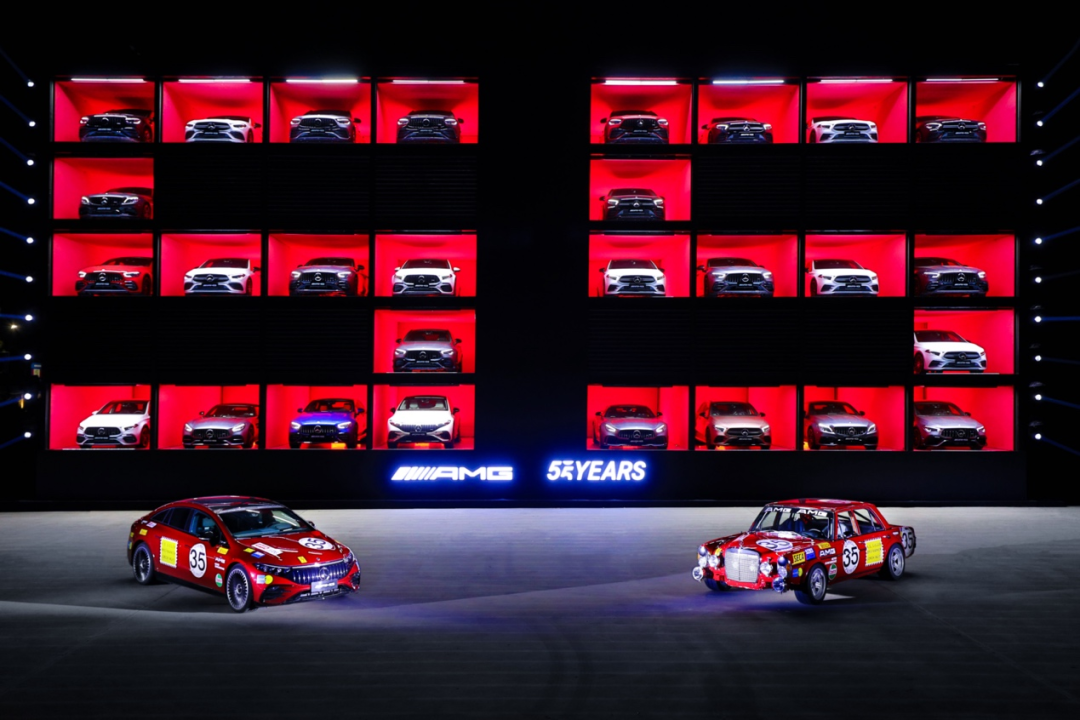
This handling comes from the air suspension that comes standard on all 4MATIC+ versions, which can adjust each wheel’s damping force in milliseconds while providing sufficient comfort. In other words, it does not provide a consistent “solid” experience like the previous mechanical hydraulic suspension. However, when the vehicle needs to turn and requires lateral support, it can quickly adjust to provide strong support and enable better performance on the bends.
This handling also comes from the vehicle’s ±9° rear-wheel steering technology. This technology, which is now widely used in high-end cars, uses a variable rear wheel as a pivot point during turning to change the vehicle’s turning radius.
So how can we describe this radius change? Simply put, a large car that is five meters long will have the turning radius of a class A car, with a lightweight and easy-to-operate experience.In short, you don’t have to worry about a full-size D-class car like the AMG EQS 53 4MATIC+ bringing a cumbersome driving experience. Flexibility, agility, and lightness are its labels in driving control. Such labels come from AMG’s heritage in driving control, combined with the blessings of excellent technology in this era.
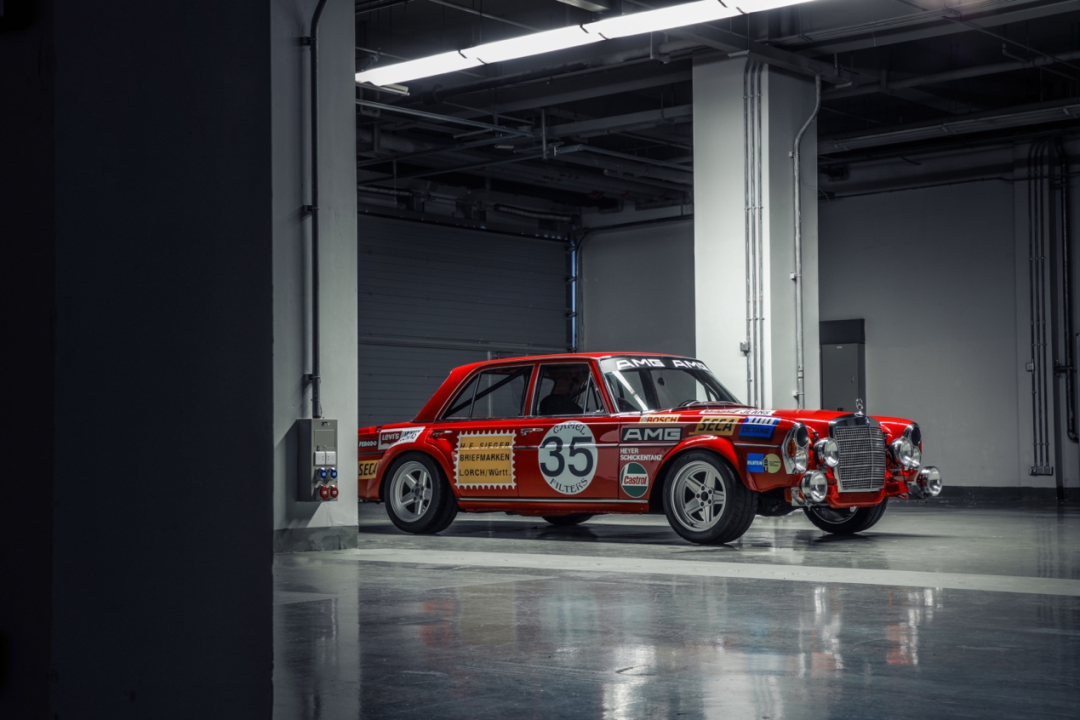
Obviously, even though AMG has already stepped into the new track of electric vehicles, it still wants to provide you with a more comprehensive and traditional driving experience like that of fuel-powered vehicles.
Now, the question is: do we still need such driving experience?
Electric Power and Driving Control Can Actually be Compatible
Without a doubt, we have taken great strides into the era of intelligent driving assistance, and pure mechanical driving control pleasure is beginning to be regarded by many people as a nostalgic category.
Today’s cars, especially new brands and new energy vehicles, are pursuing stronger human-machine interaction performance. They are more willing to weave a dream for people, making cars become robots, and belonging to the new era.
I cannot say that these are wrong, but obviously it is difficult to classify them completely as the entire scope of automotive development. At least for now, there are still many manufacturers that are more inclined towards the future in which electric cars like AMG make driving more like traditional fuel-powered cars.

Among them, besides Mercedes-Benz’s AMG, there are also Polestar, which originated from performance cars and was formerly affiliated with Volvo, and Porsche, which always pursues speed and loves driving control.
In fact, before AMG, Porsche’s Taycan was almost universally recognized as the product that integrates electric power and driving control the best. In 2021, Porsche Taycan has sold 61,000 units worldwide, exceeding the data of its brand’s soul, the 911. There is no doubt that this is a clear signal that electric cars going towards driving control can still have a very large market.
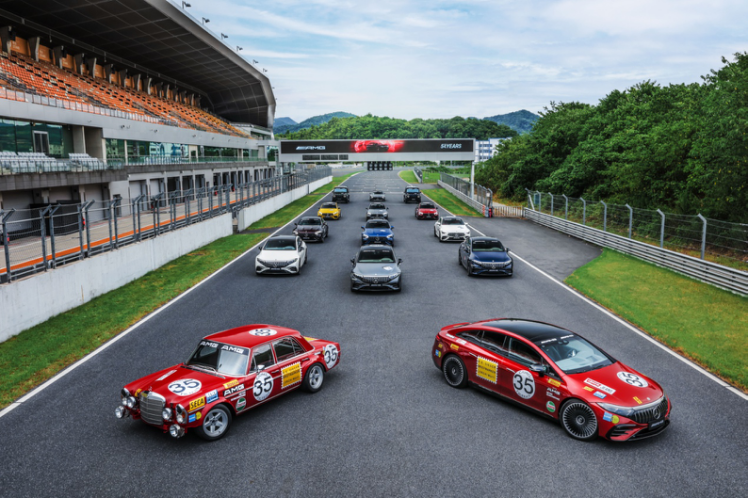
Undoubtedly, this adds confidence to Mercedes-Benz’s road to electrification, AMG’s road to electrification, and Mercedes-Benz’s continuous efforts to create electrification that is more like fuel-powered performance cars.
This confidence comes from AMG’s immense love for performance and track over the past 55 years. It also comes from the fact that everything is just the beginning of a new era of automobiles.In this new era, Taycan is a milestone, but it is premature to say that it is the pinnacle. After all, if we really want to continue the path of electrification, there is still a lot of room and potential for scalable technology and developed performance.
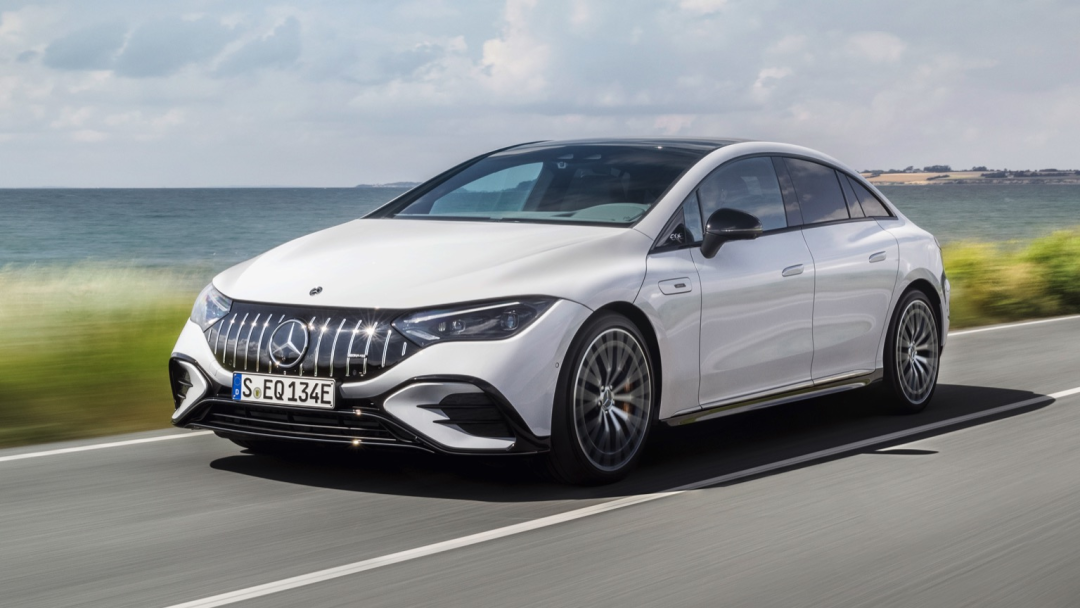
Mercedes-Benz and AMG already have a comprehensive plan on this road. In addition to the AMG EQS 53 4MATIC+, Mercedes-Benz has already launched the AMG EQE 53 4MATIC+ and AMG EQE 43 4MATIC in February of this year in a product group manner.
Without a doubt, the product matrix has been formed. With the AMG EQS 53 4MATIC+ as a benchmark, they can already launch AMG electrification products that can be more widely accepted. Clearly, compared to BMW, which is still fully expanding its electric civilian products (electricification is planned to be fully achieved by M in 2030), and Audi, whose electric product system is still incomplete and performance is still supported by the S and RS series, they have to move forward faster.
The advantage of moving forward like this is obvious. Because we know that the brand power of the new era needs to be rebuilt, and users’ minds need to be re-conquered.
If the continuous release of electrification products seems to represent a transformation of AMG, which has been around for 55 years, from the surface. When we dissect the core of AMG, the pursuit of performance, extreme speed, and driving experience has not changed.

If an AMG EQS 53 4MATIC+ that overtakes others, carrying my body forward, is to keep up with the pace of the times, then maybe when we look back on the car speeding on the highway, we may find that Hans Werner Aufrecht and Eberhard Melcher have been standing at the origin of AMG’s departure and looking forward, never leaving.
This article is a translation by ChatGPT of a Chinese report from 42HOW. If you have any questions about it, please email bd@42how.com.
